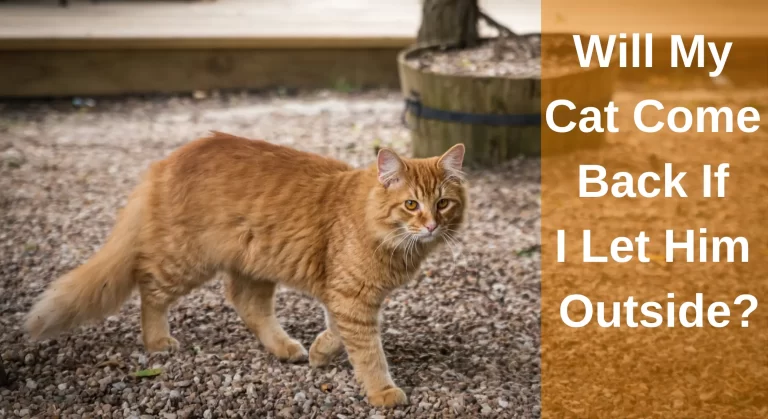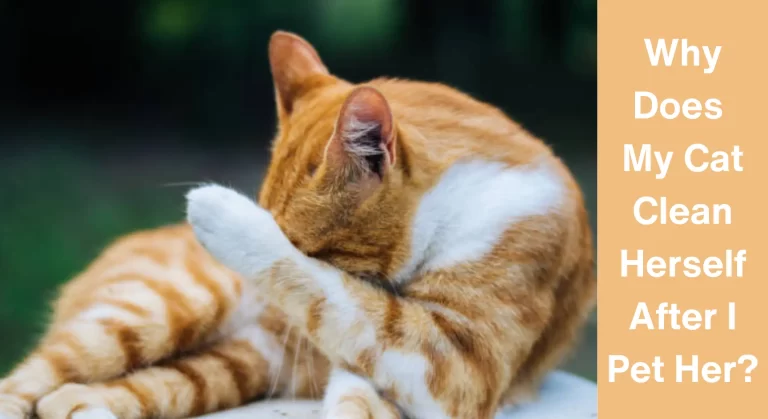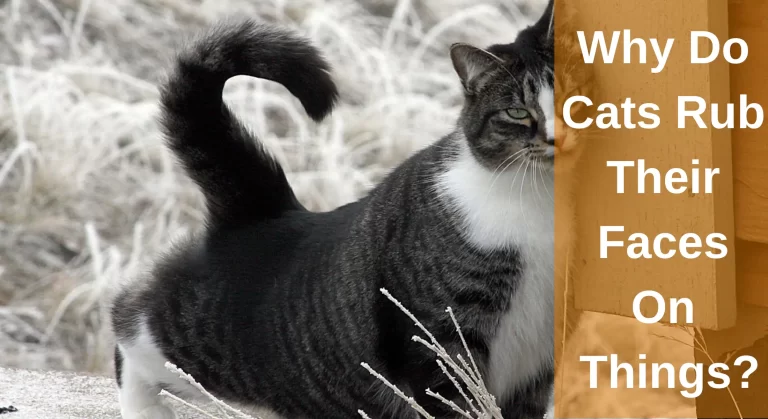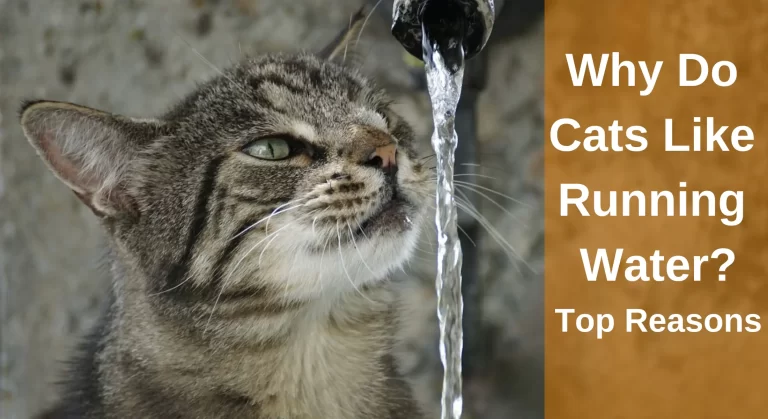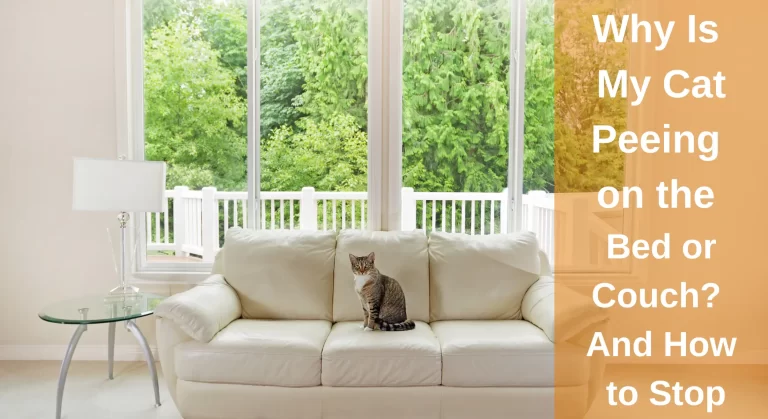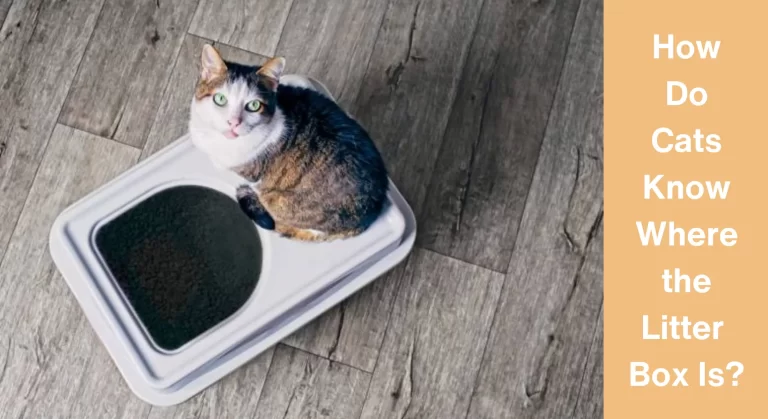My Cat Sits Next To Me But Not On My Lap – What To Do?
Cats are frequently regarded as self-sufficient and distant creatures. If you have a fondness for felines, you are well aware of the gratification that comes with having your feline companion settle onto your lap. However, not all cats are lap cats, and you may find yourself wondering “Why does My Cat Sits Next To Me But Not On My Lap”
There can be several reasons why your cat is not sitting on your lap. It could be due to their breed or family history, the presence of other animals in the household, or simply because they are not lap cats. Additionally, some cats may not enjoy being handled in a certain way or may not have been properly socialized. However, the good news is that if you are patient and provide positive reinforcement, it is possible to make your cat a lap cat.
In this article, we will delve into the possible rationales for why your cat may not prefer sitting on your lap and provide recommendations on how to create an environment that is conducive to your cat feeling more at ease on your lap.

Understanding Cat Behavior
Before diving into the reasons why your cat prefers to sit next to you, let’s first understand cat behaviour. Cats are not like dogs; they do not have the same social instincts to please their owners.
The cat is an independent creature who values its personal space and will seek physical attention on its own terms
When cats sit next to their owners, they are still showing affection, but they are also maintaining their autonomy. Cats are territorial animals, and they may prefer sitting next to their owners to assert their dominance and ownership of their space.
Reasons Why Does My Cat Sit Next to Me But Not on My Lap
Now that we have a better understanding of cat behaviour let’s explore the reasons why your cat prefers to sit next to you instead of on your lap.
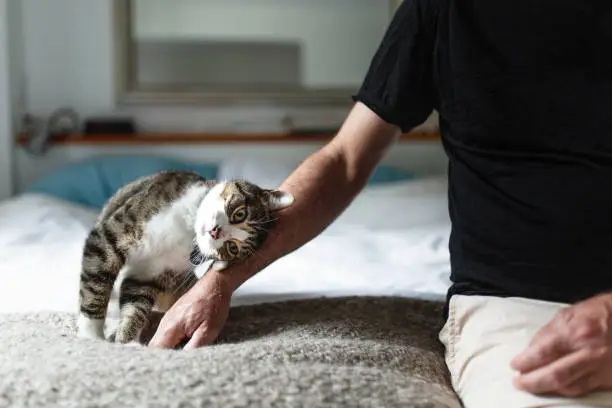
1. Family History of Domestic Cat
The history of the cat is another element to take into account. Socially adept cats are more likely to snuggle up on your lap. They know what to anticipate because they are used to handling, cuddling, and human touch. These are cats and kittens that were raised in environments with plenty of humans paying close attention to them.
On the other hand, the cat could be more apprehensive and afraid of you if it was raised in an environment where it didn’t contact people or other animals frequently. Fortunately, there is room for improvement here.
2. Not at all a Lap Cat – Personality Traits
Some cats are simply not lap cats. Just like humans, cats have their own preferences and personalities. Some cats may prefer to cuddle with their humans in other ways, such as sitting next to them or rubbing against their legs.
Some cats may have a genetic predisposition not to enjoy sitting on laps. There could be a genetic basis for this or it could be due to their breed. For example, some breeds, such as Siamese and Bengal cats, are known for being more independent and less cuddly than other breeds.
If your cat is not interested in sitting on your lap, respect their boundaries. Forcing your cat to do something they do not want to do can damage your relationship and cause stress for your cat.
However, The good news is that it is possible to teach your cat to enjoy sitting on your lap with patience and persistence.
3. Non-Social Feline and Previous Experiences
Some cats may not enjoy social interaction with humans or other animals. This could be due to a lack of socialization during their early years, trauma, or abuse. If she was adopted from a shelter or rescue group for animals, she can have trouble integrating into society.
She might be frightened of people because of her abusive previous owners. They are referred to as imprisoned cats by cat behaviourists, and it can take some time for adjustments.
If your cat is not social, it may be more challenging to train them to sit on your lap.
If you suspect that your cat may have had a traumatic past, be patient and gentle with them. Time and patience will help your cat adjust to its new surroundings. Your cat may become more comfortable with social interactions as time goes by.
4. You have Several Animals
Not all cats are comfortable around other animals. The domesticated animals in question don’t necessarily have to be cats; they may be a dog, certain birds, or another species.
Due to their intense sense of territoriality, cats get uncomfortable and afraid when they share a space with another cat.
If your cat feels like they need to constantly be on guard, it may not feel comfortable sitting on your lap.
5. It May be the Way You Handle Her
Cats are sensitive creatures and may not enjoy being handled in certain ways. If your cat does not like being picked up or held, it may not want to sit on your lap.
If you pick up your cat too quickly or abruptly, it may feel uncomfortable and not want to sit on your lap. Similarly, if you try to force your cat onto your lap, it may become frightened and less likely to want to sit on your lap in the future.
Additionally, cats may not like certain scents or textures, such as perfume or certain fabrics.
You should pay attention to your cat’s body language and behaviour to make them feel more comfortable. If they seem uncomfortable or stressed, try a different approach. You may need to experiment with different scents, textures, and handling techniques to find what works best for your cat.
6. When You First got Your Cat
Kittens are active, like exploring the house, and will usually take a well-earned snooze in your lap. Conversely, if you have adopted an older cat, it may take some time for them to gain your trust. While they may not be initially inclined to sit on your lap, this can change over time.
For those seeking a more laid-back feline companion, adopting a mature cat may be the solution. Experts suggest that the ideal time to adopt and train a cat is around 12 weeks of age. This allows for ample time to socialize and develop positive behaviours.
Remember that The way you interacted with your cat when you first brought them home may have an impact on their behaviour today. If you did not give your cat enough attention or affection when they were kittens, they may not be as affectionate as they could be.
To make up for a lost time, try spending more quality time with your cat. Play with them, give them treats, and provide them with plenty of love and attention. Over time, your cat may become
7. Comfort and Personal Space Preferences
A cat’s personal space is just as important to them as it is to humans. Some cats may prefer to sit next to their owners rather than on their laps because they feel more comfortable having their own space.
Your cat may prefer to sit on a soft pillow or a cosy cat bed rather than on your lap. Additionally, some cats do not like the feeling of being held or constrained and prefer to be close but not touch their owners.
This may be due to a variety of reasons, such as feeling too hot, wanting to stretch out, or simply wanting to be close to their owner without being physically attached to them.
8. The Temperature of Your Lap
Cats are naturally sensitive to temperature and may avoid sitting on your lap if it’s too hot or too cold. If your cat is not sitting on your lap, it could be because they are too warm and prefer to sit next to you instead.
Alternatively, If you wear thick clothing or have a heated blanket on your lap, your cat may find it uncomfortable or unpleasant to sit there. They may prefer to sit somewhere cooler, such as next to a window or in a cooler part of the room.
9. Age and Health Issues
As cats age, they may experience joint pain or arthritis, making it uncomfortable to sit on their owner’s lap.
If your cat has recently undergone surgery or suffered an injury, it may also be in pain and not want to be touched or held.
Another medical condition that can cause cats to avoid sitting on laps is Feline Hyperesthesia Syndrome, a neurological disorder that causes cats to experience heightened sensitivity to touch.
How to Make Your Cat a Lap Cat – 9 Tips
What could be cosier than having your favourite kitten or cat curl up on your lap? Our cats are independent creatures, therefore they will only communicate with you when it is convenient for them.
If you want to encourage your cat to sit on your lap, there are a few things you can do to create a comfortable and inviting space.
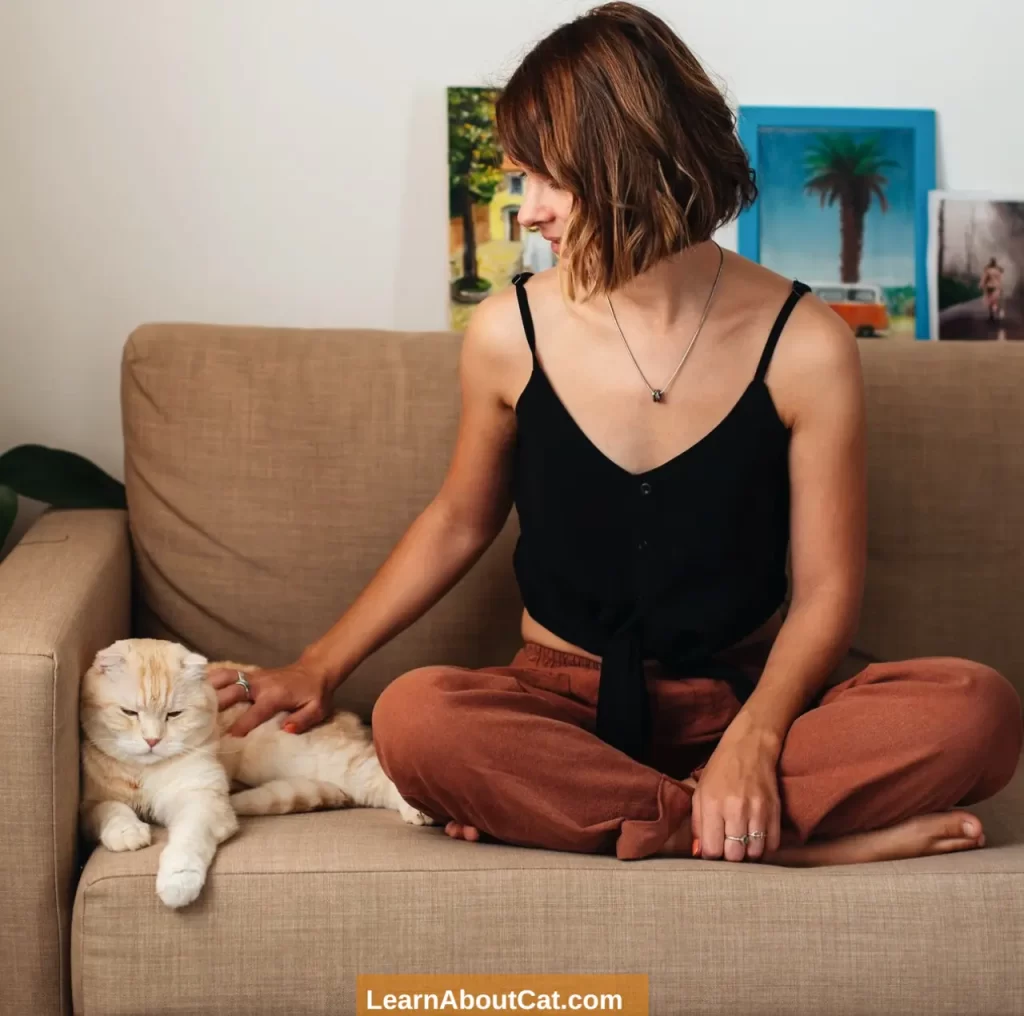
1. Establish a Comfortable Environment for Your Cat
Make sure your lap is a comfortable and welcoming place for your cat to sit. This means ensuring that you’re sitting in a comfortable position, with a soft and cosy blanket on your lap, and that your cat has plenty of space to move around and get comfortable.
2. Give Treats
If your cat is reluctant to sit on your lap, try using treats to entice them. Place a few treats on your lap or on the blanket, and see if your cat comes over to investigate.
As a result, they are more likely to sit on your lap in the future if they associate it with positive experiences.
3. Create a Calming Atmosphere
Also before tempting her to sit on your lap, make sure there are no distractions because cats may be fussy and sensitive.
This might be an unexpected noise or a ringing phone. Make sure your phone’s ringer is off and turn off all the loud gadgets in your house. If you must answer the phone, speak slowly to prevent frightening your cat.
This means minimizing noise and distractions, using calming scents like lavender or chamomile, and creating a peaceful and relaxing environment for your cat to enjoy.
4. Understand Body Language
Reading your cat’s cues and signals can also help encourage them to sit on your lap. Avoid forcing your cat to sit on your lap if they don’t want to, as this can cause stress and anxiety for your cat.
Instead, watch for signs that your cat may be interested in sitting on your lap, such as purring or kneading, and offer your lap as a comfortable option.
While many assume that a meowing cat running towards them wants to be cuddled, this isn’t always true.
It could be your feline’s way of telling you that she’s in the mood to play or that she’s hungry and needs to be fed.
5. Pay attention to How Much your Cat likes to be Petted
While some cats enjoy long, calming strokes, others choose shorter strokes on a particular body part.
Be aware of your cat’s preferences and stop any particular strokes if they frighten it, they might bite you. Try to be aware of any sensitive spots on your cat.
6. Use Positive Reinforcement
When you are trying to get your cat to sit on your lap, positive reinforcement is one of the best methods. Once your cat is settled on your lap or the chosen surface, reward them with a treat as positive reinforcement.
Over time, your cat will begin to associate sitting on your lap with positive experiences and may become more willing to do so in the future.
7. Give Independence she craves When she wants to Leave your Lap
If she wants to sit on your lap, let her; if she starts to become nervous, just leave her alone. Enjoy the thrill if she briefly rests on your lap without forcing her to stay there.
In order for her to sit on your lap for a longer amount of time the following time, try to keep a positive mood during the engagement.
8. Respect Your Cat’s Boundaries
Remember that not all cats enjoy sitting on laps, and it’s important to respect your cat’s boundaries. If your cat isn’t interested in sitting on your lap, don’t force the issue.
Instead, provide them with other comfortable spaces in the house, and let them come to you on their own terms.
While encouraging and teaching your cat to sit on your lap, you shouldn’t use the chance to trick her into taking her medication or getting her nails trimmed. If you do this, your cat will start to associate sitting on your lap with negative things.
9. Be Patient And Don’t Force
Be patient and understand that your cat may need time to adjust to the idea of sitting on your lap.
Avoid forcing them to do something they are uncomfortable with, and instead, let them come to you on their own terms.
Alternatives to Lap-Sitting
If your cat is not interested in sitting on your lap, there are plenty of other ways to bond with them and provide them with comfort and companionship.
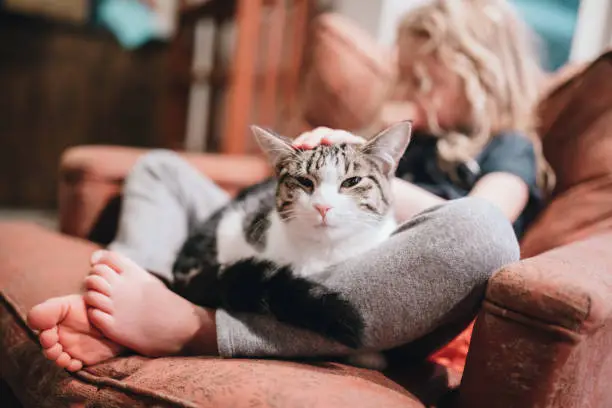
1. Playing with Your Cat
Providing your cat with mental and physical stimulation through play is a great way to bond with them.
To keep your cat active and engaged in play, use toys like balls, feathers, or laser pointers. As a result, your bond with your cat will strengthen and it will feel more comfortable and secure.
2. Grooming Your Cat
Grooming your cat can also be a great way to bond with them and provide them with comfort. This can include brushing their fur, trimming their nails, and giving them a relaxing massage.
The bond between you and your cat will be strengthened as a result, as your cat will feel more relaxed and comfortable.
3. Training Your Cat
Training your cat can be a fun and rewarding way to bond with them and provide them with mental stimulation. You can teach your cat tricks like sit, stay, or come, or work on more complex behaviours like leash training or agility training.
This can help build your cat’s confidence and provide them with a sense of accomplishment, while also strengthening your bond with them.
4. Providing Your Cat with a Comfortable Space
Providing your cat with a comfortable space to relax and unwind can also help strengthen your bond with them. This can include providing them with a cosy bed, a scratching post, or a window perch where they can enjoy the sunshine and watch the world go by.
By creating a comfortable and inviting space for your cat, you can help them feel safe and secure, and build a stronger bond with them over time.
Frequently Asked Questions
Is it normal for a cat not to want to sit on my lap?
Yes, cats have individual personalities and preferences, and some may not enjoy sitting on laps.
Can medical conditions cause a cat to avoid sitting on lap?
Yes, joint pain, arthritis, and neurological disorders can make sitting on laps uncomfortable or painful for cats.
Why does my cat sometimes sit on my lap and other times next to me?
Cats have individual personalities and preferences. Your cat’s behaviour may change depending on its mood and comfort level.
Is it bad if my cat doesn’t sit on my lap?
No, it’s not bad if your cat doesn’t sit on your lap. Cats are independent creatures and have their own unique personalities and preferences. As long as your cat is happy and healthy, that is what matters.
Some cats may enjoy lap-sitting, while others may prefer to be close to you in other ways.
Can I train my cat to sit on my lap?
You can try to encourage your cat to sit on your lap by creating a comfortable and inviting lap space, using positive reinforcement, using treats to entice your cat, creating a calming atmosphere, and respecting your cat’s boundaries.
However, it’s important to remember that not all cats will enjoy lap-sitting, and it’s important to respect your cat’s preferences.
How long should I wait before giving up on lap-sitting?
There’s no set timeline for lap-sitting, as every cat is different. Some cats may take to lap-sitting immediately, while others may take longer to warm up to the idea.
It’s important to be patient and respectful of your cat’s boundaries, and not force them to do something they’re not comfortable with.
What if my cat never wants to sit on my lap?
Respect your cat’s preferences and enjoy spending time together in other ways. Not all cats will enjoy sitting on laps, and that’s okay.
Why does my cat enjoy being close to me but not being touched?
A common reason why cats may resist handling is due to insufficient socialization. Some cats may naturally prefer to be alone, while others may hesitate to engage in physical contact due to past experiences. In some cases, a cat may never have experienced affection and will require patience and gentle encouragement to learn to enjoy petting and cuddling.
Wrap Up!
If your cat sits next to you but not on your lap, try not to worry too much. It’s okay if your cat chooses not to sit on your lap. Show tolerance somehow.
Some cats may prefer sitting next to their owners rather than on their laps due to their independent nature, grooming habits, and need for safety and security. However, there are ways to encourage your cat to sit on your lap by providing a secure comfortable and loving environment, using treats and positive reinforcement, and being patient.
Remember, cats are unique creatures with their own personalities and preferences, so don’t be discouraged if your cat still prefers sitting next to you instead of on your lap.
Who is Isabella?
My name is Isabella, and I am a dedicated and knowledgeable cat enthusiast. With years of experience caring for cats and a deep love for felines, I made a mission to help other cat lovers navigate the challenges of cat ownership.

